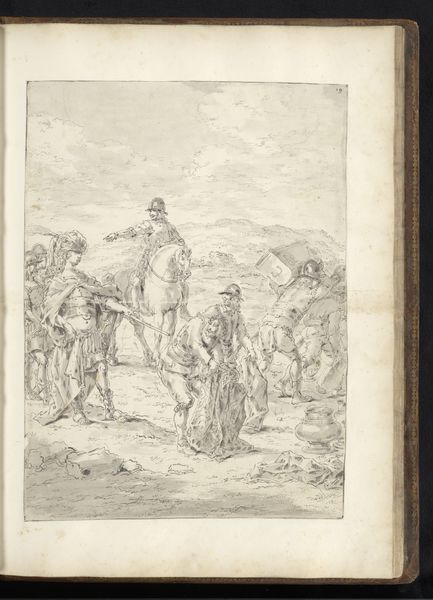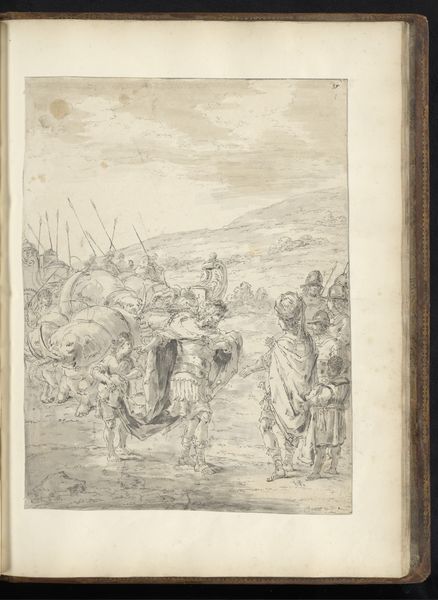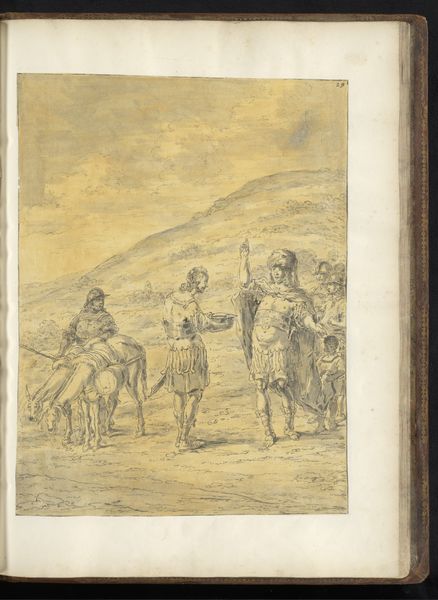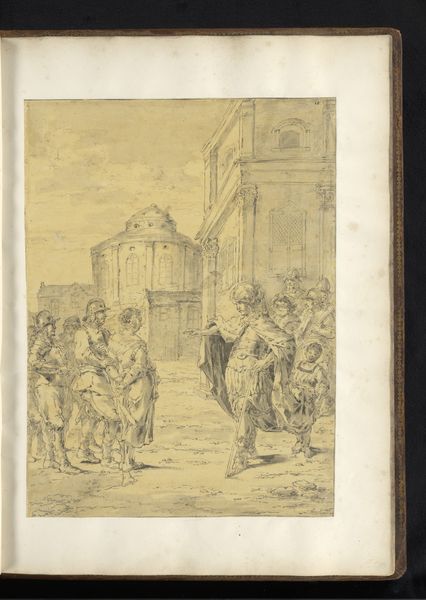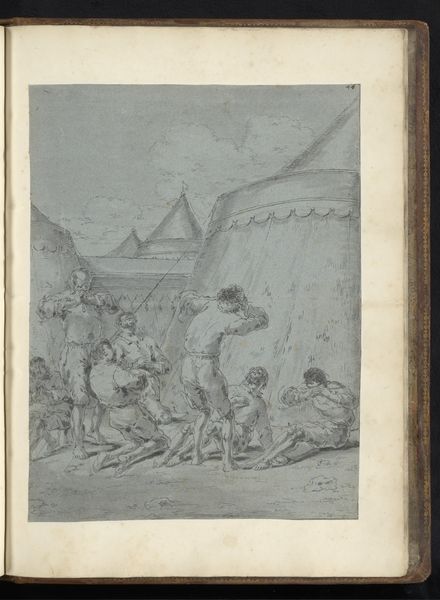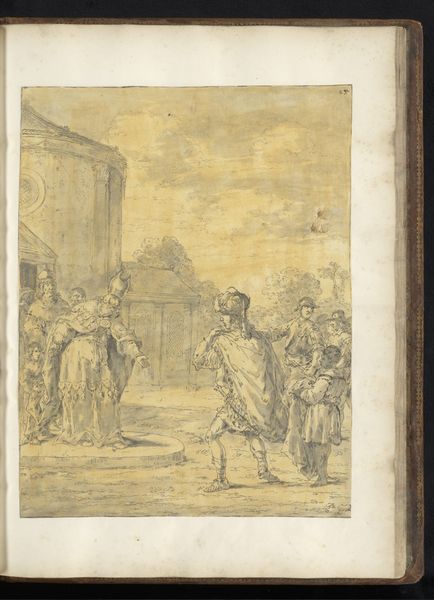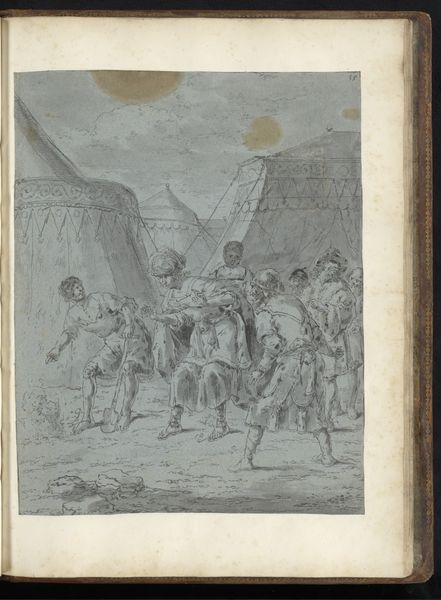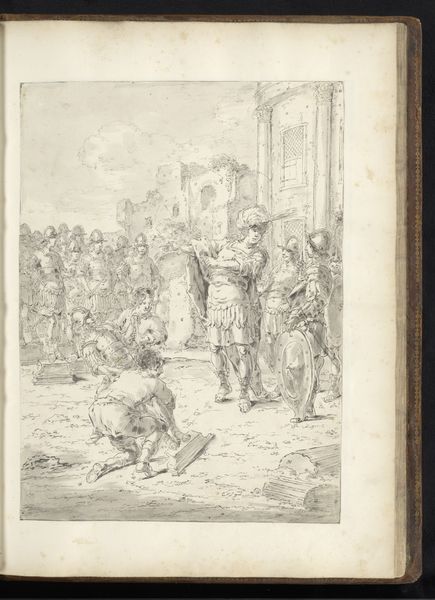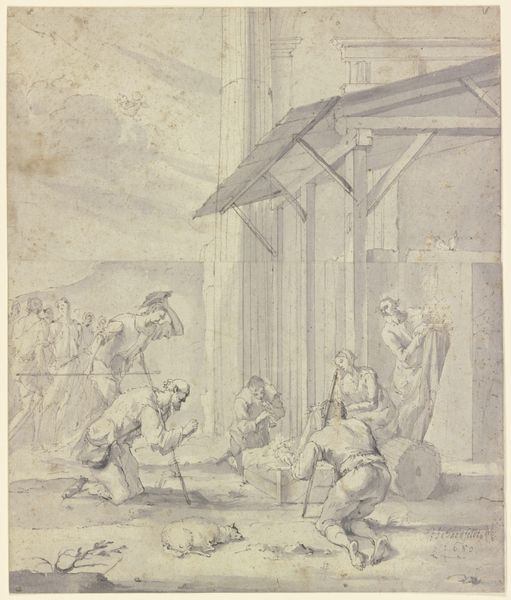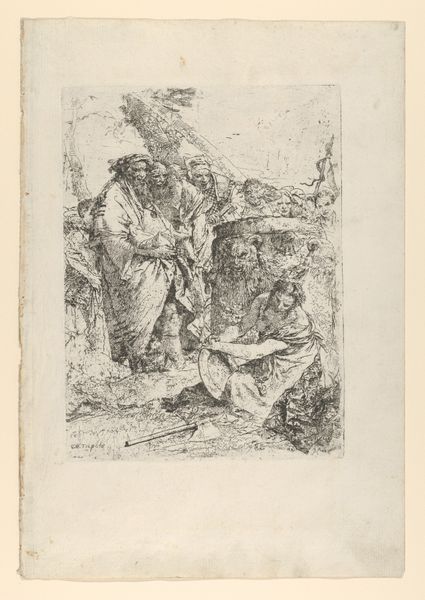
Alexander de Grote laat een graf maken voor zijn paard Bucephalus c. 1655 - 1665
0:00
0:00
drawing, paper, ink
#
drawing
#
narrative-art
#
baroque
#
figuration
#
paper
#
ink
#
line
#
history-painting
#
watercolor
Dimensions: height 407 mm, width 307 mm
Copyright: Rijks Museum: Open Domain
Editor: This ink and watercolor drawing on paper, "Alexander the Great Orders a Tomb to be Built for his Horse Bucephalus" by Leonaert Bramer, dating back to around 1655-1665, shows the great leader commemorating his loyal steed. It's an amazing rendering with lots of symbolism in the foreground, as Alexander stands at the ready to execute this dedication. What stands out to you? Curator: Look at the stark, almost skeletal trees in the background. Note their asymmetry compared to the powerful symmetry of the obelisks flanking Bucephalus. This contrast speaks volumes about mortality versus legacy, doesn't it? Alexander seeks to transcend death through memory, through a monument. The horse becomes an emblem, loaded with the virtues he wishes to embody. Editor: So, the image immortalizes Bucephalus but is there also another level? The broken columns almost seem to mock the leader and make one ponder mortality as well as immortality. Curator: Exactly! Fragments always suggest a ruin, time’s inevitable erosion of power. Bramer subtly presents both the aspiration and the futility of defying oblivion. Alexander is not just burying a horse; he is projecting an image of himself. He is striving for apotheosis, a raising to divine status that is, ultimately, just out of reach. See the way his hand clutches the spear, it is indicative of all his aspirations. Editor: It is fascinating how much Bramer packs into a drawing with relatively muted colors. Curator: Absolutely, consider how the iconographic layering encourages us to see beyond the surface narrative, towards deeper, perhaps unanswerable questions. The creation of this image serves its purpose by representing human nature in this one particular and brief moment of leadership's history. Editor: I now find myself contemplating themes of mortality and memory much more deeply than when I began! Curator: And I think I better understand how such cultural memory and aspiration persist across millennia, through art.
Comments
No comments
Be the first to comment and join the conversation on the ultimate creative platform.
